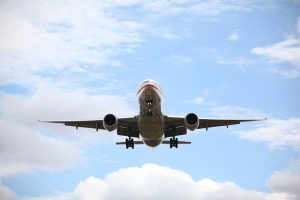
Rain isn’t the only force of nature that affects airplanes. Equally if not more impactful is wind shear. From small Cessnas to jumbo-sized commercial airliners, it affects all types of airplanes. For a better understanding of wind shear and how pilots deal with it, keep reading.
Overview of Wind Shear
Wind shear is a sudden change in the speed or direction of wind over a short distance. It’s often linked to weather events, such as storms, cold fronts and jet streams. When severe weather occurs, it can create gusts of fast-moving or erratic wind over a short distance. Known as wind shear, it can affect airplanes that encounter them.
Wind shear can be both vertical and horizontal. Vertical wind shear involves changes in wind as you move up or down, while horizontal wind shear involves changes over a flat distance. While it’s a natural weather event, it poses a significant risk to airplanes, particularly during takeoff and landing.
Types of Wind Shear
There are two primary types of wind shear: horizontal and vertical. While they both involve a sudden change in the speed or direction of wind over a short distance, the way in which they move relative to airplanes differs.
Horizontal wind shear moves horizontally relative to airplanes. Vertical wind shear, on the other hand, moves vertically relative to airplanes. Of those two types of wind shear, the latter has the greatest impact on airplanes. Vertical wind shear typically occurs at low altitudes where it can affect the lift or speed of airplanes.
Takeoffs and Landings
Airplanes are most susceptible to the effects of wind shear during takeoffs and landings. Wind shear can occur at any altitudes, but the air is denser at low altitudes. As a result, when airplanes take off or land, they may feel the effects of this phenemonon.
During takeoffs, wind shear may destabilze airplanes before they are able to reach an appropriate altitude. During landings, it can cause airplanes to land too short or too far from the runway. With that said, pilots are trained to identify signs of wind shear and make adjustments accordingly.
Most commercial airliners are equipped with systems to detect wind shear. These systems use radar to spot changes in the speed or direction of wind in the airplane’s flight path. Pilots can then make the necessary adjustments to minimize the impact of wind shear when landing or taking off.



